11 Stunning Purple Plants That Attract Hummingbirds
If you want to create a hummingbird-friendly garden, planting vibrant purple flowers is a great way to attract these delightful birds. Purple blooms are known for their rich nectar, which provides the perfect energy boost for hummingbirds. These flowers not only add color and beauty to your garden but also offer a reliable food source throughout the growing season. By choosing the right plants, you can make your garden a welcoming haven for hummingbirds.
This post may contain affiliate links, which helps keep this content free. Please read our disclosure for more info.
Purple Coneflower (Echinacea purpurea)
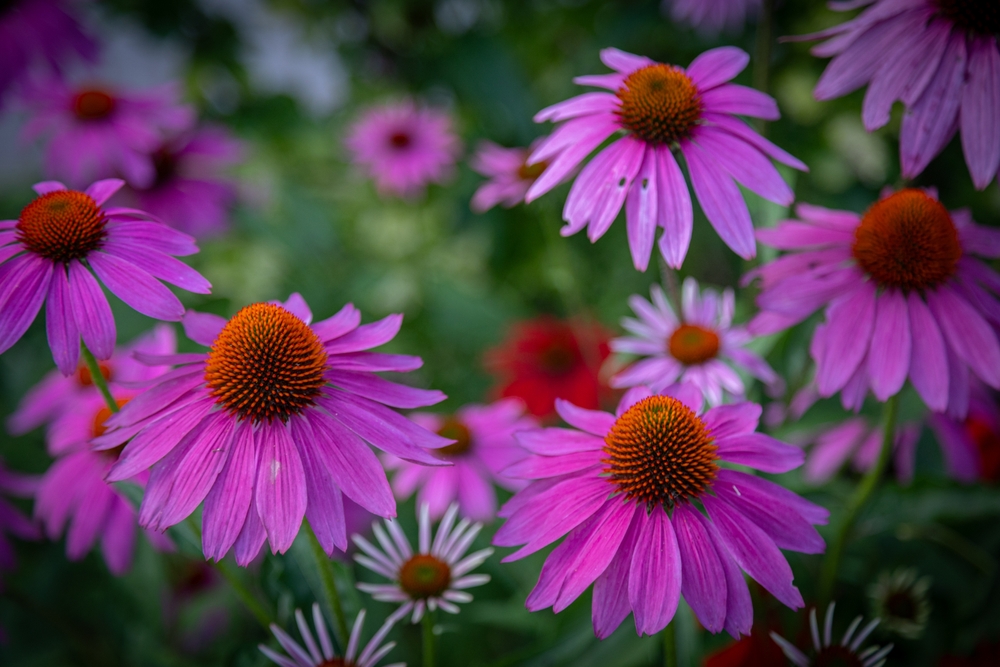
Purple coneflowers are well-known for their vibrant purple blooms that thrive in full sun. The flowers’ center cones are rich in nectar, making them a perfect choice for attracting hummingbirds. These hardy perennials are also easy to grow and maintain, offering a long-lasting nectar source from summer to fall. Planting purple coneflowers in large groups will enhance their visibility to hummingbirds, as they are attracted to large, colorful patches of flowers.
The flowers’ prominent, daisy-like petals create a large visual display that hummingbirds can easily spot from a distance. Their open structure also allows for easy access to the nectar, making them a favorite among these birds. As a bonus, purple coneflowers are drought-tolerant and come in various cultivars, offering flexibility in your garden design.
Salvia (Salvia spp.)
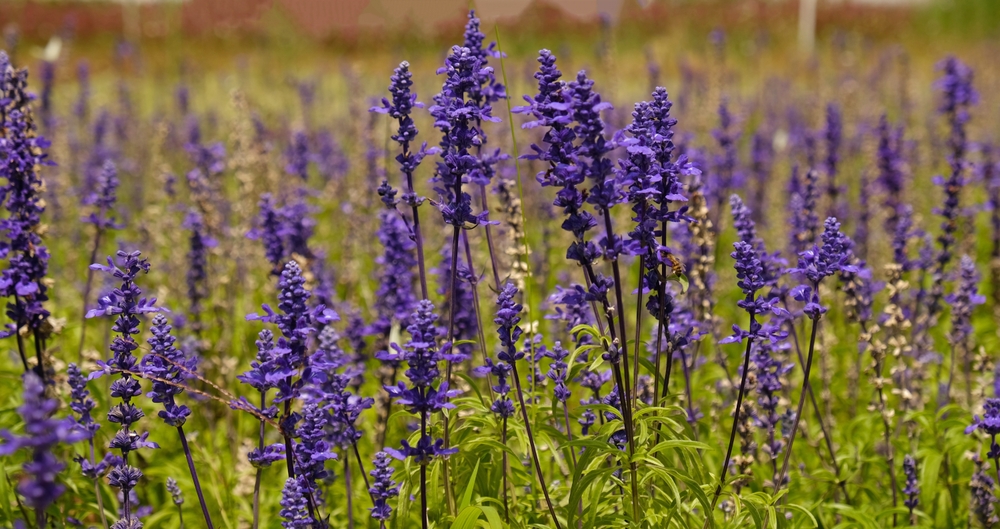
Salvia, particularly varieties like Salvia nemorosa or Salvia greggii, is known for their deep purple hues and tubular flowers. These plants produce nectar-rich flowers that attract not only hummingbirds but also butterflies. Their upright form and striking spikes of flowers make them a great choice for adding vertical interest to your garden. Planting salvia in clusters will make the nectar easier for hummingbirds to access, encouraging them to visit more frequently.
Salvia flowers are long-lasting and thrive in well-drained soil, making them low-maintenance. The tubular shape of the flowers is perfect for hummingbirds, whose long bills are designed for extracting nectar from such blooms. The vibrant purple flowers and their rich nectar will keep your hummingbird visitors coming back for more.
Bee Balm (Monarda didyma)
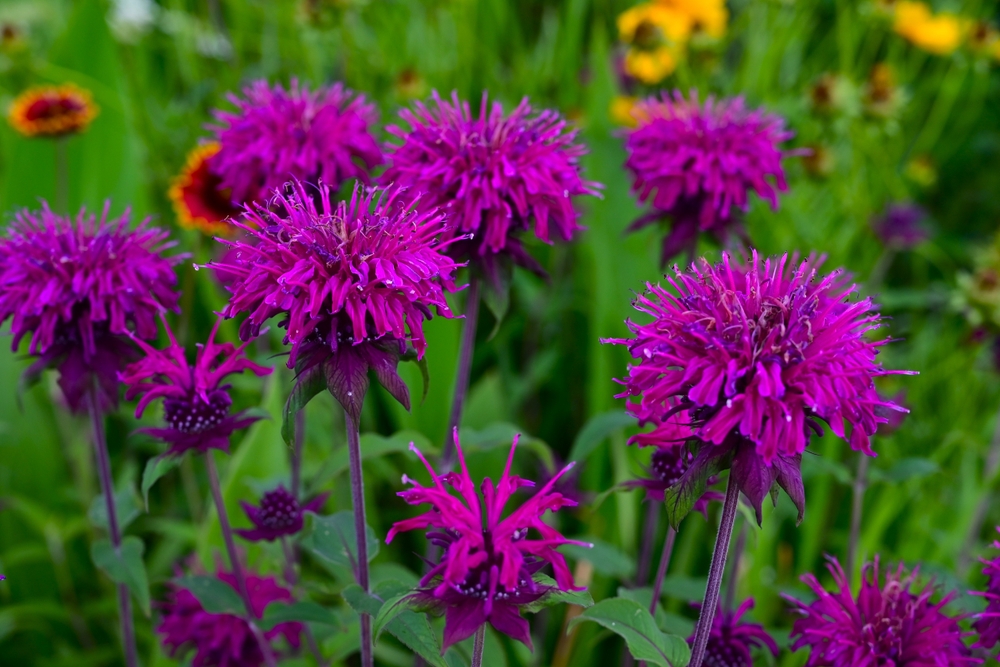
Bee balm, also known as Monarda, has striking purple flowers that are highly attractive to hummingbirds. These plants produce clusters of tubular flowers that are rich in nectar, making them irresistible to the birds. Bee balm thrives in moist, well-drained soil and blooms in mid to late summer, providing a reliable food source for hummingbirds throughout the season.
The plant’s fragrant, minty scent also adds another layer of attraction, drawing in hummingbirds as well as beneficial pollinators. By planting bee balm in masses, you create a vibrant patch of purple flowers that are easy for hummingbirds to spot and feed from. The added scent will help lure the birds in, making it a must-have for a hummingbird-friendly garden.
Lobelia (Lobelia erinus)
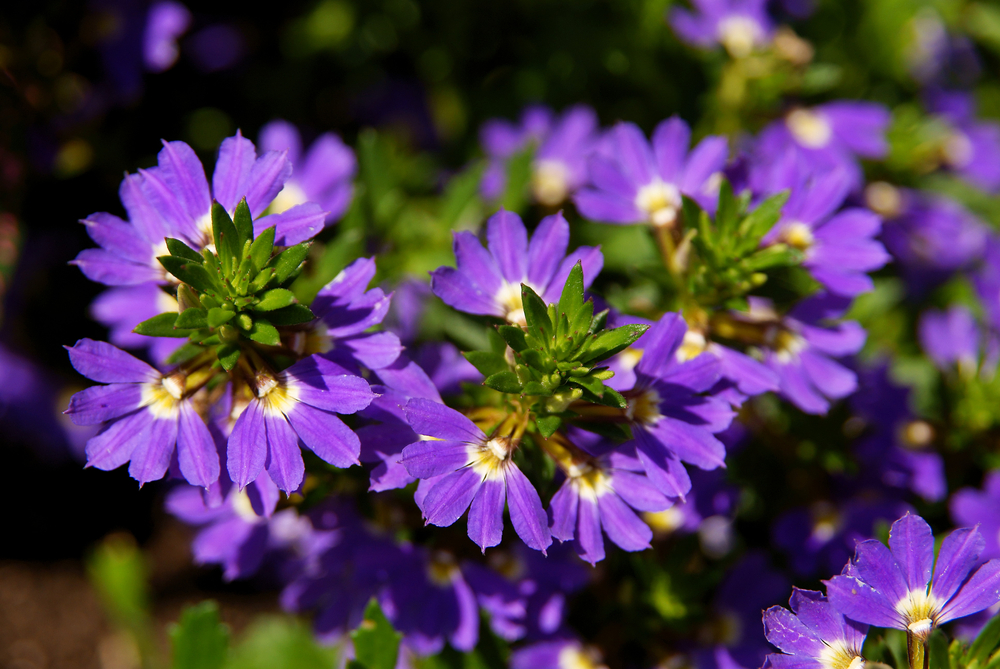
Lobelia is another excellent choice for attracting hummingbirds, with its delicate, trumpet-shaped purple flowers. These flowers produce a lot of nectar, which is exactly what hummingbirds need for energy. Lobelia is an annual plant that thrives in hanging baskets, containers, or as ground cover, allowing you to position it in various areas to make it more accessible to the birds.
Lobelia’s vibrant purple color and nectar-rich blooms are eye-catching to hummingbirds, and when planted in drifts, they become even more visible. These flowers are particularly effective in attracting hummingbirds to more vertical spaces, such as hanging baskets or raised beds, creating a multi-layered garden environment.
Columbine (Aquilegia canadensis)
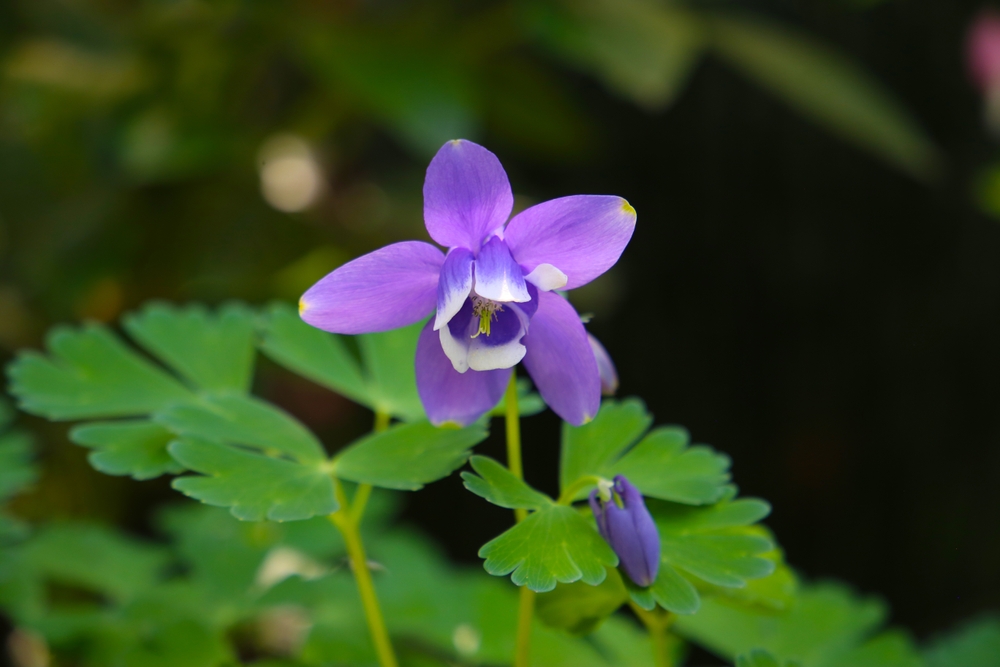
Columbine plants are known for their unique and striking flowers, which come in a range of colors, including shades of purple. The flowers have a tubular shape, making them easy for hummingbirds to access, and their nectar is highly attractive. Columbine prefers part shade and moist, well-drained soil, making it an ideal plant for woodland or shaded garden areas.
These flowers bloom in late spring to early summer, providing an early source of nectar for hummingbirds. By planting columbine in small groups or clusters, you can enhance its visibility to these birds, making them more likely to visit and feed. Their attractive form and color make them a natural addition to any hummingbird garden.
Creeping Thyme (Thymus serpyllum)
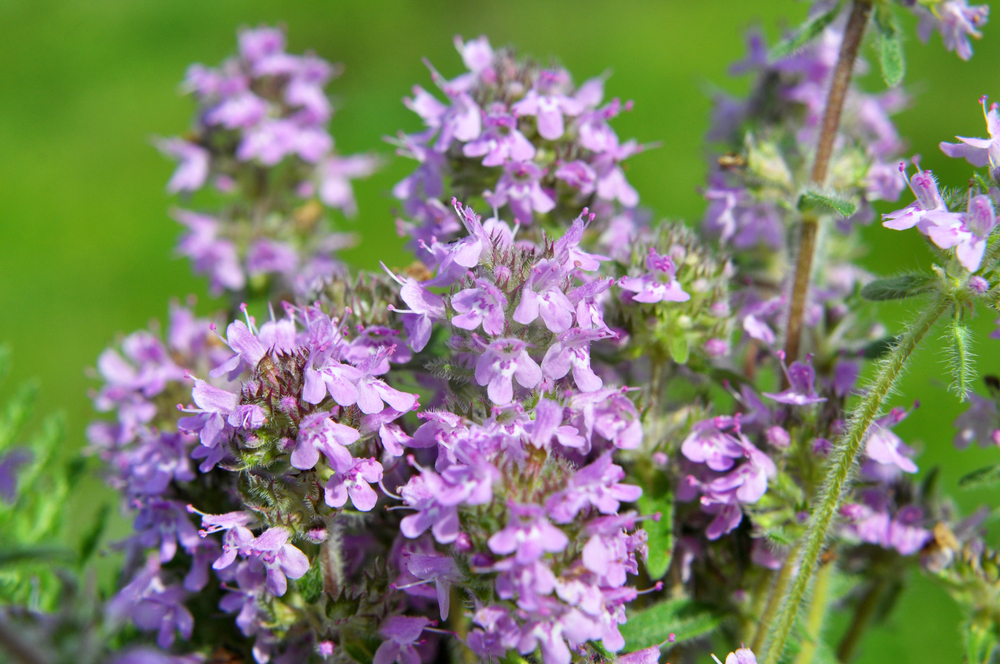
Creeping thyme is a low-growing perennial that produces small, purple flowers, making it an excellent choice for ground cover or as a border plant. The tiny flowers are packed with nectar, attracting hummingbirds and other pollinators. Thyme thrives in full sun and well-drained soil, making it perfect for rock gardens or paths.
The dense, fragrant mats of purple flowers are easy for hummingbirds to spot, and planting them in large patches will increase the likelihood of attracting these birds. Creeping thyme is also very drought-tolerant and requires minimal maintenance, making it a practical choice for hummingbird gardens.
Violet (Viola spp.)
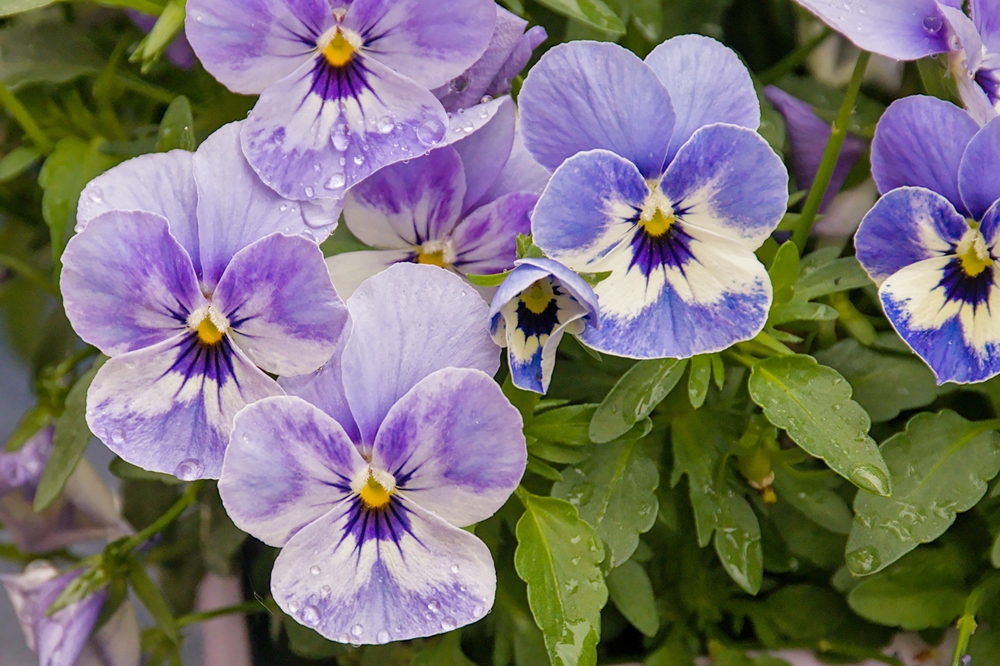
Violets, with their sweet-smelling and colorful blooms, are another plant that can attract hummingbirds with ease. The small purple flowers are rich in nectar, making them a great food source for these birds. Violets are perfect for shaded areas of the garden and grow well in moist, well-drained soil.
Planting violets in large groups will make them more noticeable to hummingbirds, who will be drawn to their vivid purple flowers. Violets are also relatively low-maintenance and can spread over time, providing more nectar and attracting more hummingbirds to your garden.
Fuchsia (Fuchsia spp.)
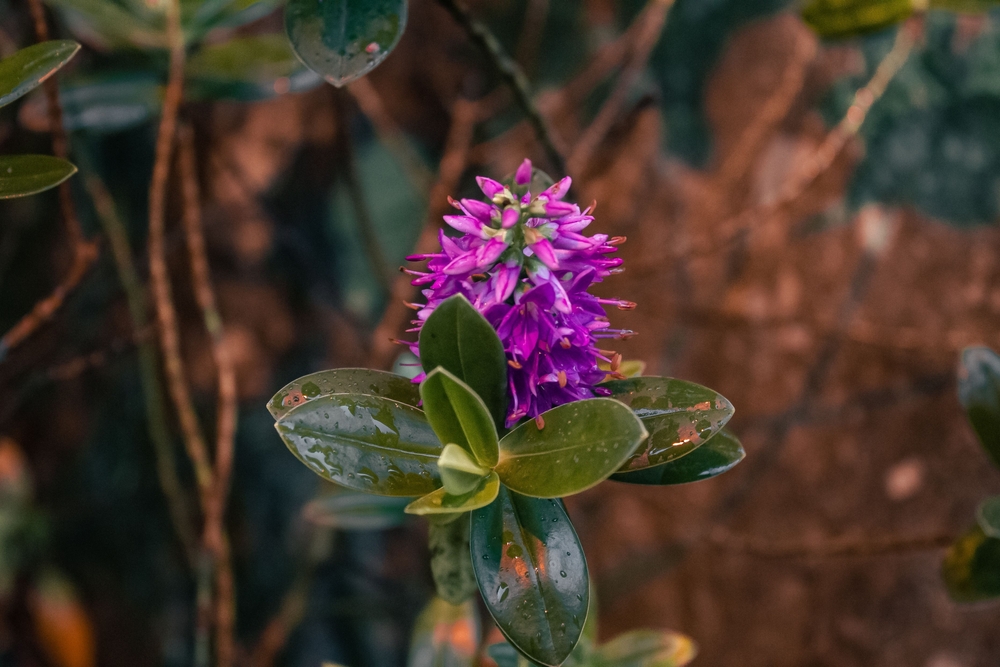
Fuchsia is a well-known hummingbird favorite, with its pendant-shaped purple flowers that are rich in nectar. These plants are perfect for hanging baskets, containers, or as part of a mixed garden display. Fuchsia flowers come in several color variations, with purple being one of the most attractive to hummingbirds.
Fuchsia plants thrive in partial to full shade and prefer moist, well-drained soil. By planting them in hanging baskets or as part of a larger floral display, you can increase their visibility to hummingbirds, encouraging the birds to visit often. Fuchsia’s drooping flowers make it easy for hummingbirds to access the nectar with their long beaks.
Monkshood (Aconitum spp.)
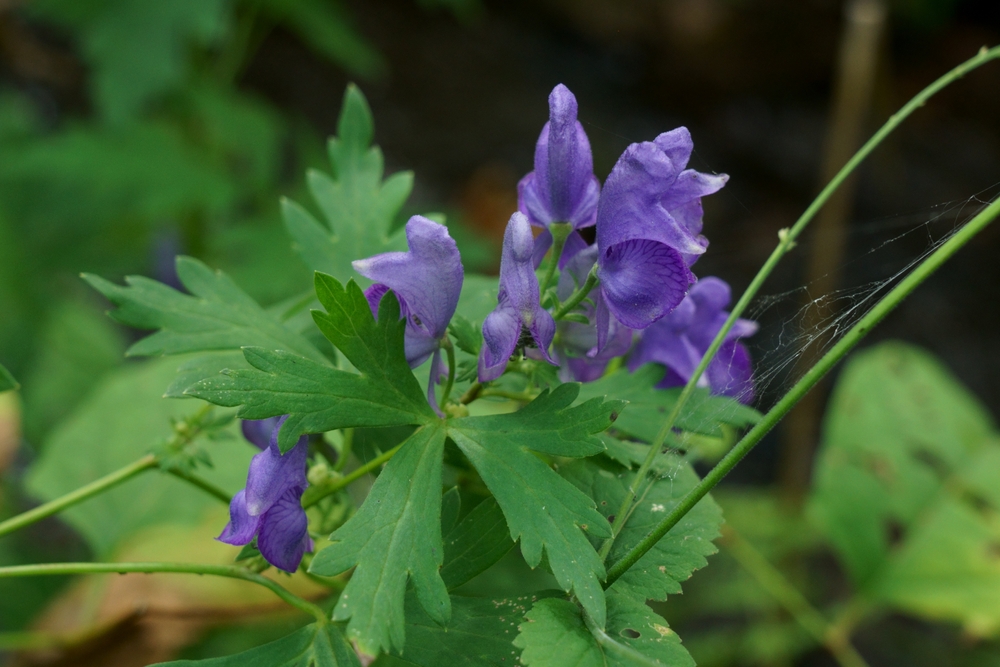
Monkshood, also known as Aconitum, produces tall spires of purple flowers that are a striking addition to any garden. These plants are particularly attractive to hummingbirds due to their rich nectar and unique, hooded blooms. Monkshood thrives in partial to full shade and prefers moist, cool soil, making it a great choice for woodland gardens.
Planting monkshood in groups allows hummingbirds to spot the flowers more easily, while the height of the spires makes it a visually appealing option. Monkshood blooms in late summer to early fall, providing nectar to hummingbirds as the season progresses.
Spiderwort (Tradescantia spp.)
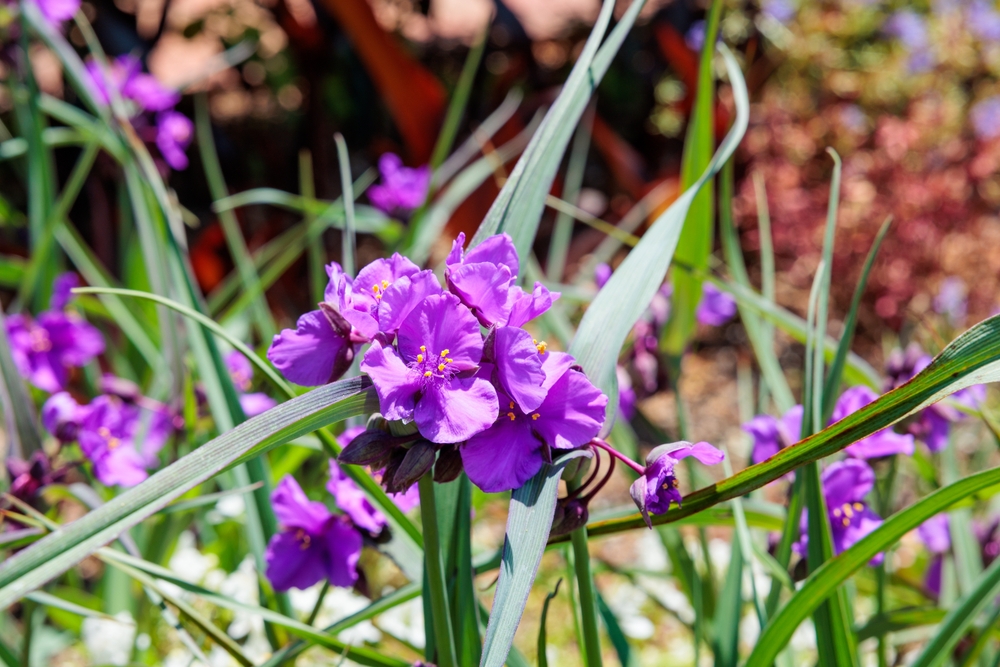
Spiderwort is a perennial plant that produces clusters of purple flowers in late spring to early summer. Its large, open flowers are full of nectar, attracting hummingbirds and other pollinators. Spiderwort thrives in full sun or partial shade and prefers well-drained, slightly moist soil, making it adaptable to various garden conditions.
Planting spiderwort in drifts will enhance its visibility, making it more likely to attract hummingbirds. The flowers’ open structure and rich nectar make them perfect for these birds, providing a reliable source of food during the growing season.
Catmint (Nepeta faassenii)
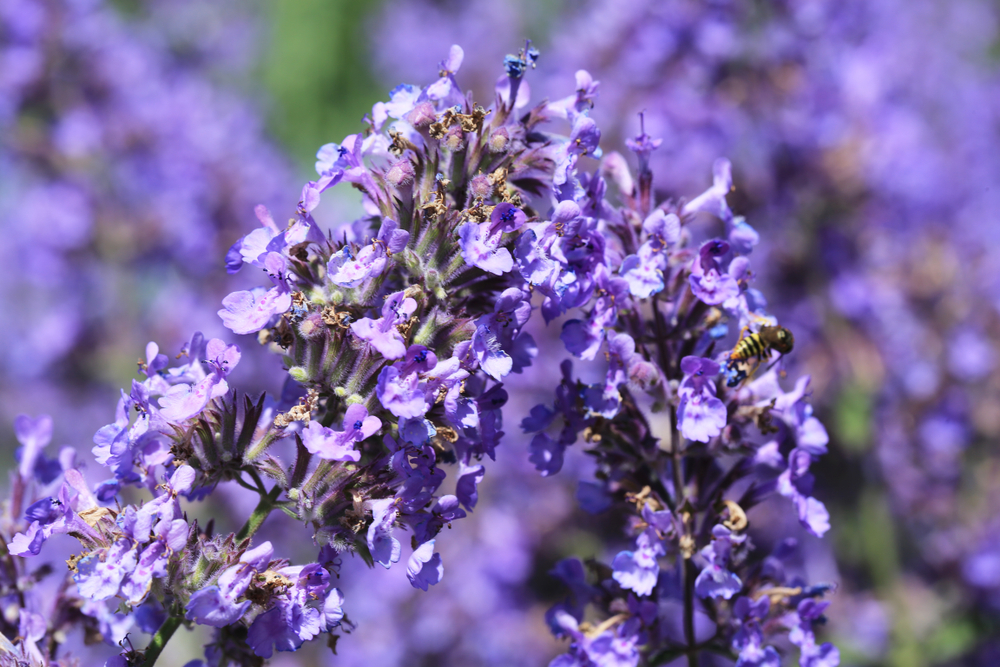
Catmint, with its soft, lavender-purple blooms, is an excellent addition to any hummingbird-friendly garden. The small, tubular flowers are filled with nectar, making them irresistible to hummingbirds. Catmint is also known for its resilience, thriving in a variety of soil conditions and needing little maintenance once established.
By planting catmint in clumps or borders, you can create a vibrant patch of purple flowers that hummingbirds can easily spot. These plants are also attractive to other pollinators, making them a great all-around addition to your garden.
This article originally appeared on Avocadu.
